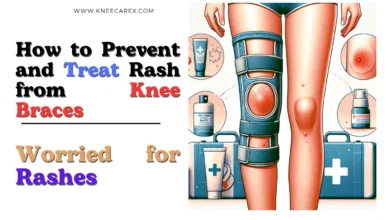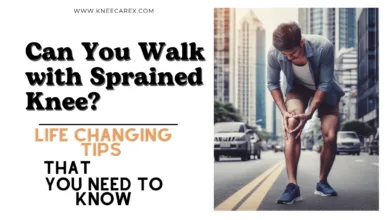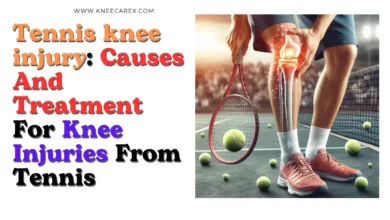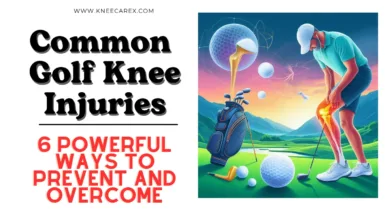Volleyball Knee Pain: 7 Breakthrough Strategies for a Winning Comeback!

Are you sick of having knee pain prevent you from playing volleyball on the court? Do you dream of diving fearlessly and powerfully without the nagging ache in your knees holding you back? Well, it’s time to jump back to victory! In this article, we will reveal seven proven strategies to conquer volleyball knee pain. Whether you’re a seasoned player or just starting, these techniques will not only alleviate your discomfort but also enhance your performance on the court. So get ready to spike, block, and set with confidence as we dive into treating and preventing knee injuries in volleyball.
Contents
- 1 Volleyball Injuries and Treatment
- 2 Strengthening: The Foundation of Resilience
- 3 Flexibility: The Art of Movement
- 4 Proper Technique: The Skill of Safety
- 5 Supportive Footwear: The Unsung Hero
- 6 Cross-Training: A Diverse Approach
- 7 Rest and Recovery: The Silent Healer
- 8 Nutrition and Hydration: The Fuel for Success
- 9 FAQs
- 9.1 Q1: What are the most common knee injuries in volleyball?
- 9.2 Q2: How to prevent knee injuries in volleyball?
- 9.3 Q3: What first aid technique is needed for volleyball-related knee injuries?
- 9.4 Q4: Can knee pain from volleyball be fixed without surgery?
- 9.5 Q5: What exercises can strengthen my knees for volleyball?
- 9.6 Q6: How to fix knee pain from volleyball?
- 10 Conclusion: Volleyball Knee Pain
Volleyball Injuries and Treatment
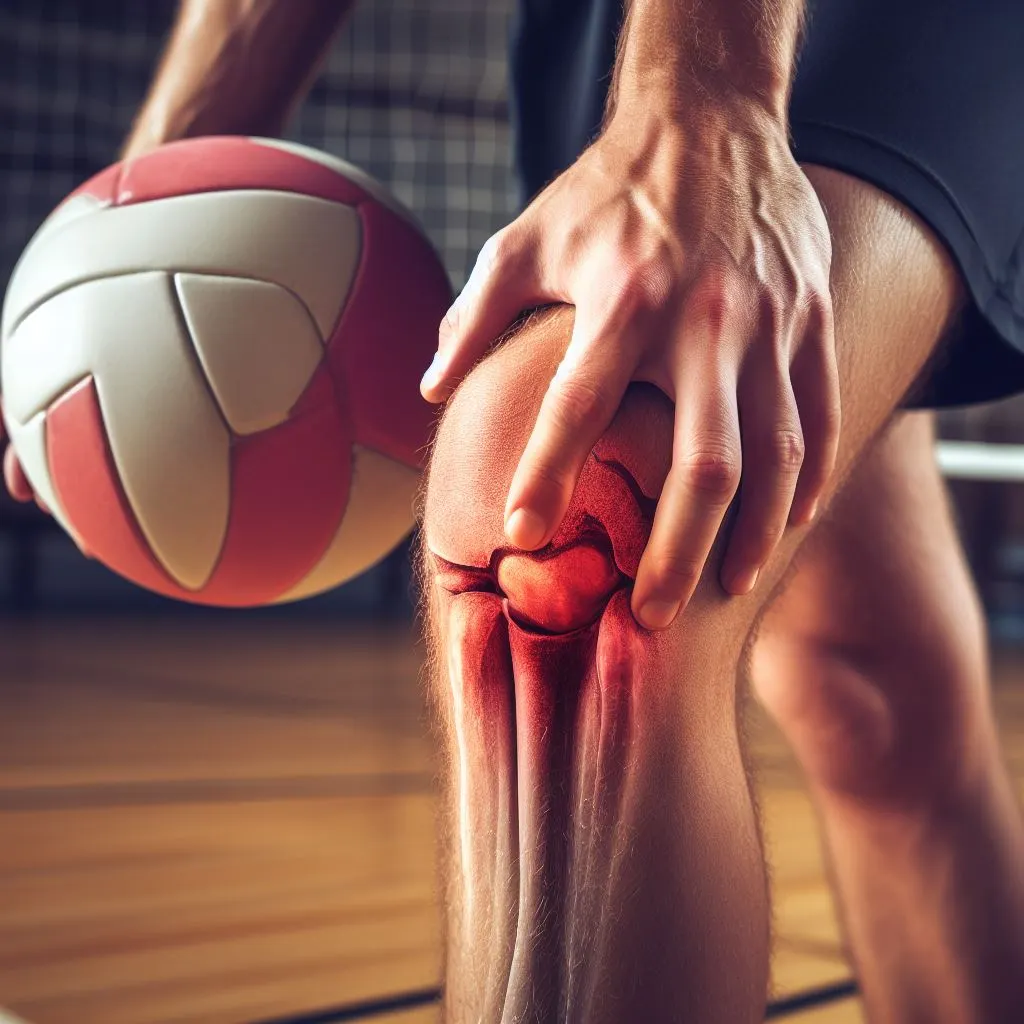
Strengthening: The Foundation of Resilience
Maintaining peak volleyball performance and avoiding knee injuries require strengthening the knee muscles. Concentrating on the hamstrings, calves, and hip muscles—all of the primary muscle groups involved in leg movements—one can build a robust knee support system that lessens strain and absorbs stress during games. Targeting the quadriceps, hamstrings, glutes, and calves, squats are an excellent way to strengthen these muscles. Resistance training with weights or resistance bands can also be helpful.
Exercises that target these muscles and adapt to volleyball-specific movements, such as leg extensions and hamstring curls, are practical. Exercises that strengthen the tiny stabilizing muscles surrounding the knee joint include side step-ups and lateral lunges. Increasing your total muscle strength not only helps you avoid knee pain but also enhances your performance on the volleyball court.
Exercises to consider:
- Squats and lunges for quadriceps and hamstrings
- The calf raises to fortify the support around your knee
- Hip abductors and adductor exercises to maintain knee alignment
Flexibility: The Art of Movement
In volleyball, flexibility is essential for avoiding injuries since taut muscles can pull on the knee joint, causing discomfort and possibly harm. A volleyball player should include flexibility exercises like hamstring, quad, and calf stretches in their training regimen to avoid knee injuries. These workouts lengthen muscles and guarantee that the knee joint is aligned correctly. As they place a strong emphasis on posture, alignment, and stretching, yoga and pilates can also help with flexibility and general muscular balance. Players can lower their risk of knee pain and injuries by investing time in flexibility and strength training exercises tailored to volleyball movements, allowing them to return to winning form quickly.
Key stretches include:
- Hamstring stretches
- Quadriceps stretches
- Calf stretches
- IT band stretches
Proper Technique: The Skill of Safety
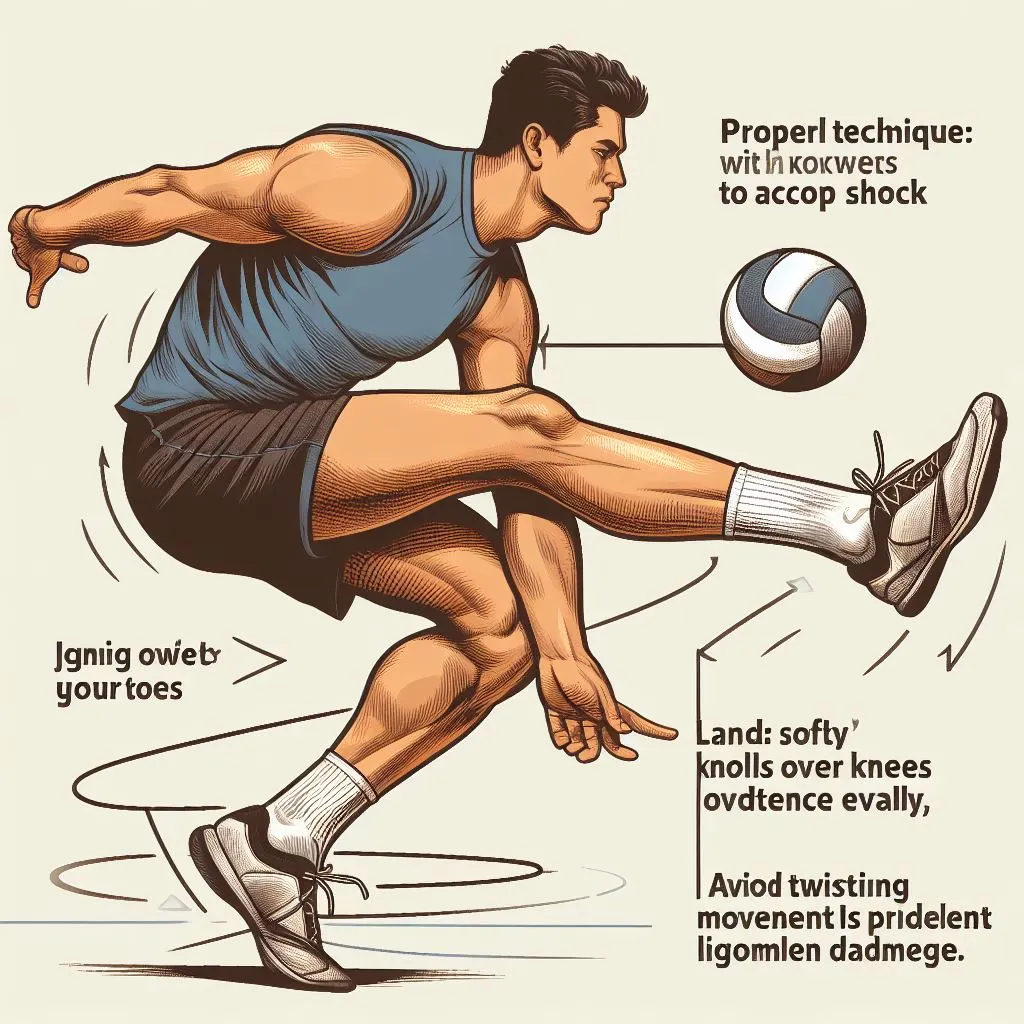
After performing a deft spike or block, the landing should be gentle and knee-bending. Before landing, using your quadriceps muscles can help stabilize your kneecap and give you extra support. Players can reduce their chance of knee pain or injuries by focusing on these technique-intensive areas. This will ensure their joints remain healthy and allow them to enjoy the sport without pain or setbacks.
Focus on:
- Jumping with knees bent to absorb shock
- Landing softly with knees over toes to distribute force evenly
- Avoid twisting movements when landing to prevent ligament damage
Supportive Footwear: The Unsung Hero
To keep your knees healthy when playing volleyball, you must wear shoes designed for the sport. The purpose of these shoes is to lessen the impact on joints during jumps and landings by offering stability and cushioning. A crucial component is stability; low-profile styles support ankles and feet during rapid lateral motions. By more equally dispersing impact forces, cushioning, especially in the heel and forefoot, reduces knee stress. Making high-quality footwear a priority is crucial to overcoming knee pain from volleyball and succeeding on the court. As a result, it’s critical to put excellent footwear first while developing your volleyball footwear plan.
When selecting shoes, look for:
- Adequate cushioning to absorb impact
- Good ankle support to prevent rolling
- A comfortable fit to avoid unnecessary strain
Cross-Training: A Diverse Approach
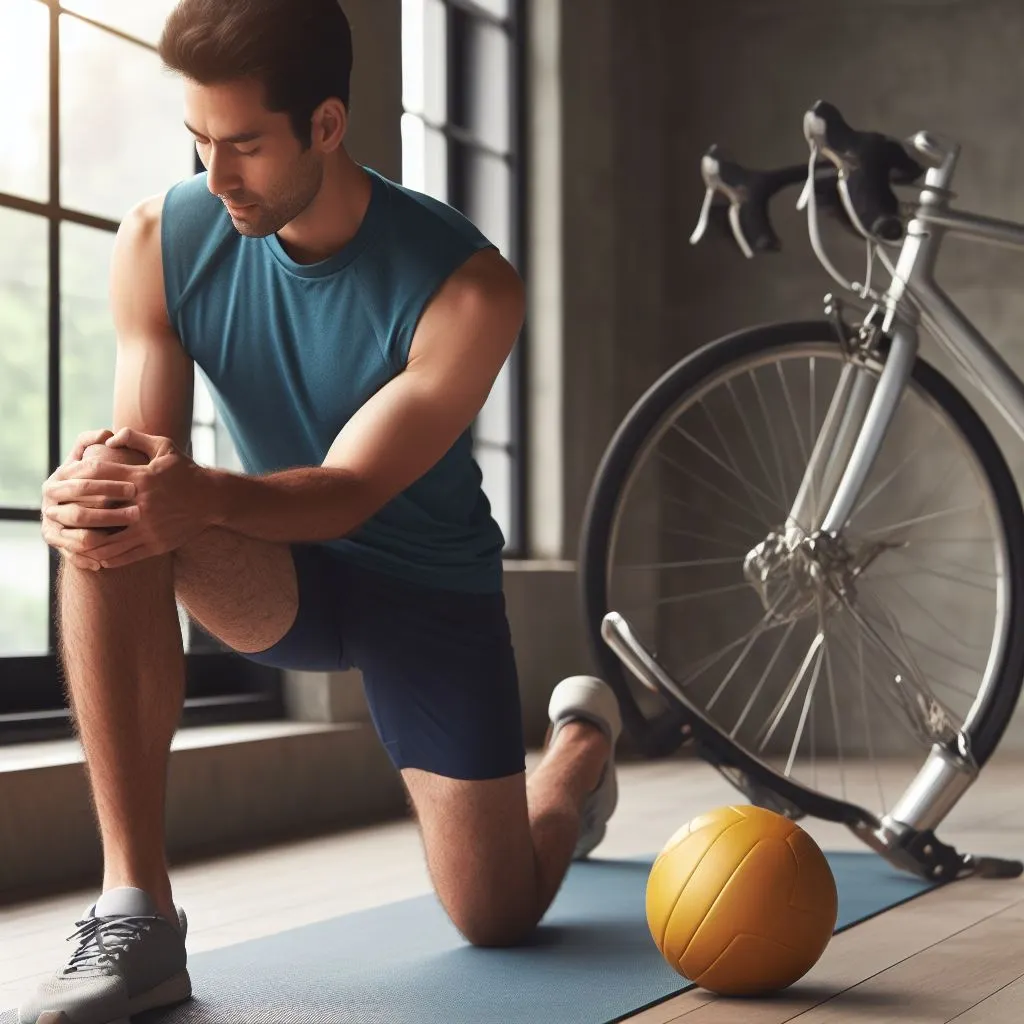
Practical cross-training activities include:
- Swimming for low-impact full-body conditioning
- Cycling to build leg strength without the impact
- Yoga for improving flexibility and core strength
Rest and Recovery: The Silent Healer
Because it gives the body time to rebuild and strengthen muscles and joints after strenuous exercise, regular rest is essential for volleyball players to avoid knee injuries. Repetitive diving can lead to overuse ailments such as tendinitis or patellar tracking disorder. Training regimens that include frequent rest days provide the body with the chance to mend tiny tears and strengthen weaker areas. Because high-intensity volleyball can be mentally taxing, mental renewal is also essential.
Remember:
- Sleep is when the majority of muscle repair occurs
- Overtraining can lead to injuries, including knee pain
- Active recovery, like light swimming or walking, can aid in muscle recovery
Nutrition and Hydration: The Fuel for Success
Eating a healthy, well-balanced diet high in anti-inflammatory foods—like berries, nuts, leafy greens, and fatty fish—can help lessen inflammation and accelerate the healing process. It’s crucial to drink enough water to keep your joints healthy and aid in muscle recovery. For athletes, consuming eight glasses of water or more each day can help avoid and treat injuries already sustained. Athletes can avoid knee pain when they return to the court by consuming these foods and being well-hydrated. Incorporate into your diet:
- Omega-3 fatty acids found in fish and flaxseeds
- Antioxidant-rich fruits and vegetables
- Adequate protein for muscle repair
- Plenty of water to maintain hydration
FAQs
Q1: What are the most common knee injuries in volleyball?
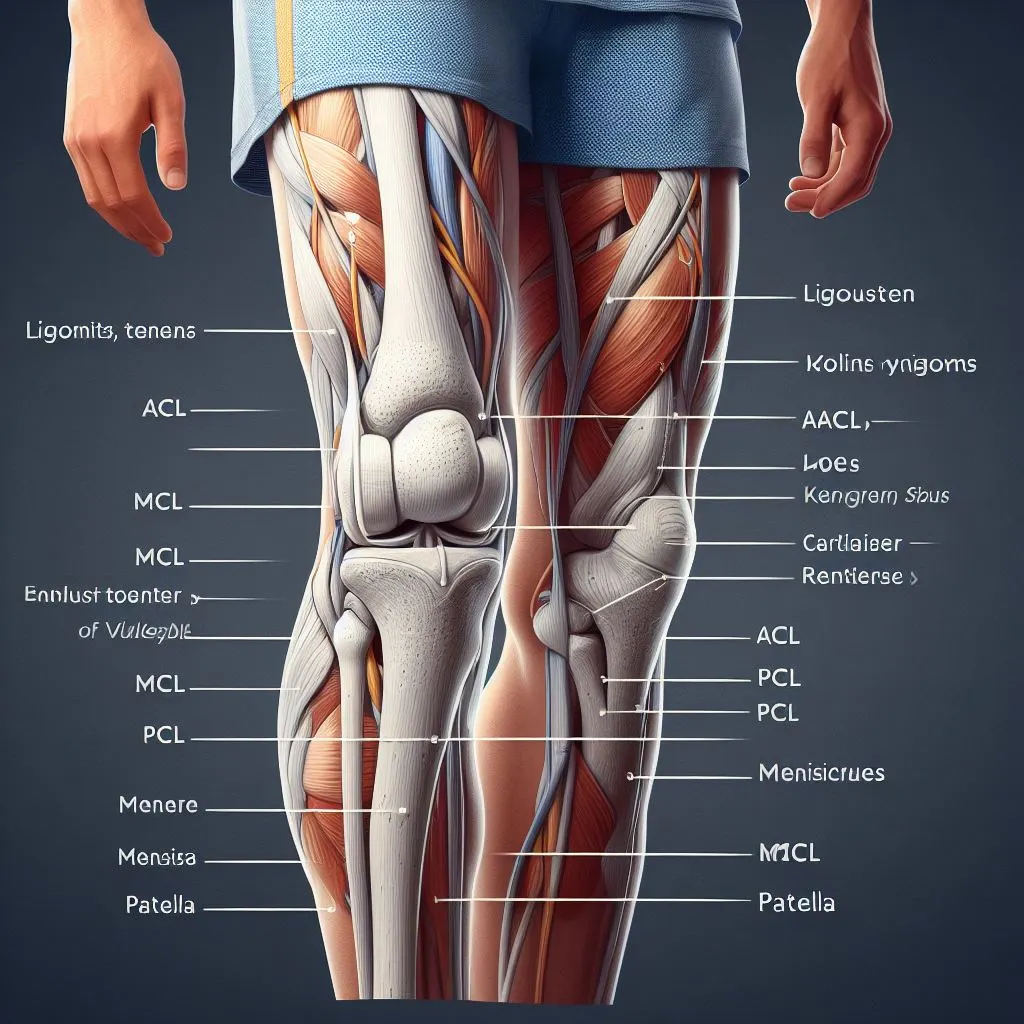
Q2: How to prevent knee injuries in volleyball?
Prevent knee injuries by strengthening leg muscles, practicing proper technique, wearing supportive footwear, cross-training, and allowing for adequate rest and recovery.
Immediate first aid techniques include the RICE method: rest, ice, compression, and elevation. For severe injuries, seek professional medical attention.
Q4: Can knee pain from volleyball be fixed without surgery?
Many cases of knee pain can be managed and alleviated with physical therapy, proper rest, and non-invasive treatments. Surgery is typically considered when these methods are ineffective or the injury is severe.
Q5: What exercises can strengthen my knees for volleyball?
Squats, lunges, leg presses, and hamstring curls build knee strength. Always ensure proper form to avoid injury.
Q6: How to fix knee pain from volleyball?
To alleviate knee pain from volleyball, you can rest and elevate your knee, use ice packs, and take over-the-counter pain relievers. Strengthening exercises can help prevent future injuries. However, if the pain continues, seek medical attention, as it could indicate a more severe problem.
Conclusion: Volleyball Knee Pain
In conclusion, volleyball knee pain impairs an athlete’s enjoyment and performance. Strength training, supportive footwear, and warm-up methods are preventive strategies that can control it. It is advised to use safety equipment, such as knee pads, and consult a specialist. For a speedy recovery, early detection and treatment are essential. Maintaining your physical health is crucial to playing volleyball well.
Also Check: 5 Steps on How to Wrap a Knee for Maximum Support and Quick Recovery
